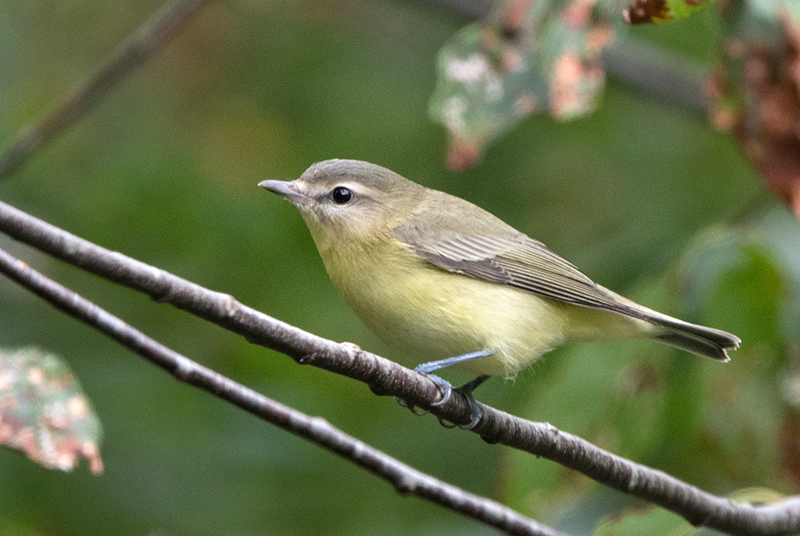| Early Spring Date: | April 30 |
| Late Spring Date: | May 31 |
| Infrequently Seen | |
Spring: Philadelphia Vireos winter in Central America and fly across the Gulf of Mexico. Not many pass through the Washington metro area. During many years, none have been recorded at Monticello Park.
Fall: Only a few Philadelphia Vireos have ever been seen at Monticello during the fall.
Where to See Them in the Park
Philadelphia Vireos usually forage in the mid-story. There is no best place to see them at Monticello.
Physical Description

The sexes of Philadelphia Vireos look alike. Adult plumage looks the same in the spring and fall, but in each season, there can be variations in the brightness of the plumage. Philadelphia Vireos are smaller and look more delicate than a Red-eyed Vireo. They have a white line over the eye. Their eyes are not red, and their face pattern is not as distinctive as the Red-eyed. They have an olive-brown back with no wingbars, and the underparts have a yellow wash. Some look similar to Warbling Vireos, who are slightly larger. Others look like a Tennessee Warbler with a vireo's bill.
Vocalizations
Philadelphia Vireos have a sing-song vocalization that sounds like the monotonous song of the Red-eyed Vireo.
Hear the vocalizations of the Philadelphia Vireo.Notes
Philadelphia Vireos are uncommon around Philadelphia. They were named by John Cassin, who observed one near Philadelphia in 1842. Long after Cassin died, he had a vireo species named after him. The Cassin's Vireo (found along the West Coast) used to be considered part of the same species as the Blue-headed Vireo.
Origin of Names
Common Names: Philadelphia because the first specimen was observed near Philadelphia, Pennsylvania. Vireo is Latin for green.
Genus Name: Vireo means green.
Species Name: Philadelphicus means from Philadelphia.
Philadelphia Vireo video footage
Return to the Index
